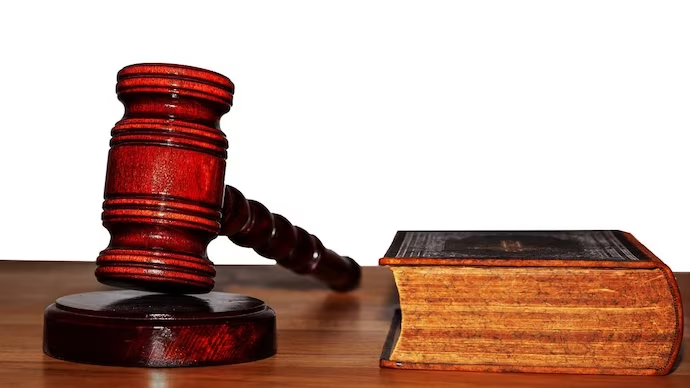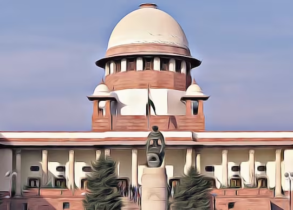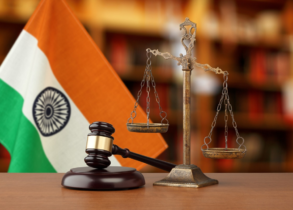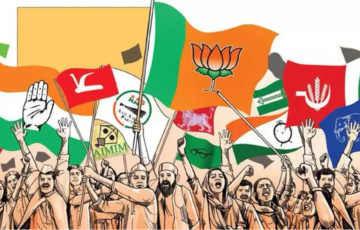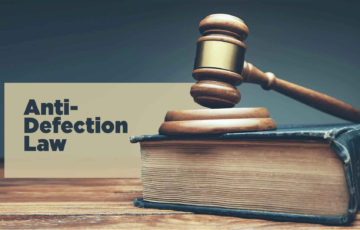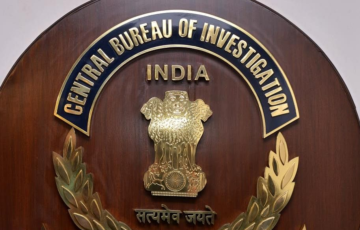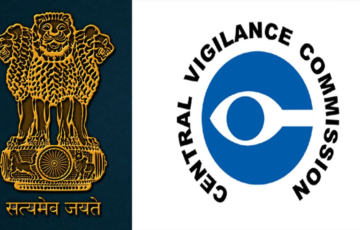JUDICIAL REVIEW
Historical Background
- The doctrine of judicial review, originated by the American Supreme Court, allows a court to declare laws or orders unconstitutional. In the United States, it is based on the Constitution. In India, judicial review was affirmed as a fundamental constitutional feature in the 1975 Indira Gandhi v. Raj Narain case. It enables courts to review and invalidate laws or actions that violate the Constitution and fundamental rights.
Meaning
- Judicial review is a process that examines the legality of government actions, decisions, or legislation, focusing on the process rather than the decision itself. It ensures that the law has been correctly applied and proper procedures have been followed by the government or administrative bodies, ensuring that government actions are in accordance with the law.
- In India, the principle of “Procedure Established by Law” is a significant aspect of judicial review, as enshrined in Article 21 of the Indian Constitution. This principle safeguards the right to life and personal liberty, requiring any deprivation to follow established legal procedures. The Indian Constitution is the supreme law, and if any law contradicts or breaches the basic structure, the courts have the authority to declare it null and invalid.
- While the phrase “judicial review” may not be explicitly mentioned in the Indian Constitution, several articles provide a clear understanding of the powers and authority of Indian courts in reviewing and striking down unconstitutional or in violation of fundamental rights. Judicial review is a powerful tool for protecting individual rights and maintaining the integrity of the constitutional framework, allowing courts to act as a check and balance on government actions.
Who has the power to execute judicial review?
- In India, both the High Courts and the Supreme Court are empowered to conduct judicial reviews. These powers are granted under specific articles of the Indian Constitution: Articles 226 and 227 for High Courts and Articles 32 and 136 for the Supreme Court. Despite the principle of separation of powers among the government branches, including the executive, legislative, and judiciary, the judiciary has the unique authority to review and assess the actions of the other two branches, ensuring that they adhere to the law and constitution. This authority plays a crucial role in maintaining checks and balances in the Indian government system.
Constitutional Provision
- Article 13 states that all laws which are inconsistent with or in derogation of the fundamental rights shall be void. This means that the Supreme Court has the power to strike down any law that it finds to be violative of the fundamental rights enshrined in Part III of the Constitution.
- Article 32 gives the Supreme Court the power to issue writs of habeas corpus, mandamus, prohibition, quo warranto, and certiorari. These writs can be used to protect fundamental rights and to ensure that the government and other public authorities act within the limits of their power.
- Articles 131 through 136 deal with the appellate jurisdiction of the Supreme Court. The Supreme Court has the power to hear appeals from the High Courts and from other lower courts.
- Article 143 gives the President the power to seek the opinion of the Supreme Court on any question of law or fact.
- Article 226 gives the High Courts the power to issue writs of habeas corpus, mandamus, prohibition, quo warranto, and certiorari. The High Courts also have the power to hear appeals from lower courts.
- Article 246 deals with the distribution of legislative powers between the central government and the state governments. The Supreme Court has the power to resolve disputes between the central government and the state governments, and between different state governments.
Conditions for the Applicability of Judicial Review
- Presumption of Constitutionality: Courts often follow the principle that if there are two possible interpretations of a law, one of which aligns with the constitution and the other which conflicts with it, the court should prefer the interpretation that upholds the constitution. This principle is commonly known as the “presumption of constitutionality.” It means that courts are inclined to interpret laws in a manner that avoids constitutional conflicts whenever possible.
- Enforceability Requirement: Courts typically refrain from applying judicial review to laws that have not been brought into legal enforceability. In other words, they may not review hypothetical or theoretical legal issues. Instead, judicial review is usually triggered when a law is applied in practice or is about to be applied in a real-life situation. This requirement helps ensure that courts are addressing concrete cases and not engaging in abstract or speculative legal challenges.
- Suo Moto Review: Suo moto (Latin for “on its own motion”) review means that the court initiates a case or judicial review process without a formal petition from a party. The principle you mentioned suggests that courts typically wait for a formal legal challenge (petition) to be filed before applying judicial review. This is often a practical and procedural requirement to ensure that the court’s review is based on specific legal issues presented by the parties involved.
- These principles help guide the application of judicial review, ensuring that it is used judiciously and in a manner that upholds the constitution and addresses real legal disputes. The preference for interpretations that conform with the constitution reflects the courts’ role in safeguarding the rule of law and constitutional principles.
Relation Between Judicial Review and Constitutional Amendment
- Constitutional amendment and judicial review are two important concepts in Indian constitutional law. Constitutional amendment is the process of changing the Constitution, while judicial review is the power of the judiciary to strike down any law that it finds to be violative of the Constitution.
- The power of judicial review is a necessary corollary of the power of constitutional amendment. If the judiciary did not have the power of judicial review, then the Parliament could simply amend the Constitution to overturn any decision of the judiciary that it did not like. This would undermine the independence of the judiciary and the rule of law.
Guidelines in Judicial Review
Certain doctrines have developed in the courts to serve as guides in the judicial review process.
| Doctrine/Principle | Description |
| Doctrine of Severability | The court determines if a challenged law is entirely unconstitutional or if only certain sections are unconstitutional. The court may declare the law entirely or partially unconstitutional. |
| Doctrine of Progressive Interpretation | The judiciary interprets constitutional provisions in light of evolving social, economic, and legal circumstances, allowing the Constitution to adapt to changing times. |
| Doctrine of Prospective Overruling | Assumption that judicial invalidation or reinterpretation of the law will not affect previous transactions or vested rights, but will apply only to future transactions. |
| Doctrine of Empirical Adjudication | Courts focus on addressing concrete, real issues rather than hypothetical or abstract matters. Rulings are closely tied to the specific case and parties involved. |
| Presumption in Favor of Constitutionality | When a law’s constitutionality is challenged, there is a presumption in favor of its constitutionality. The court will not declare it unconstitutional unless the invalidity is proven beyond a reasonable doubt, reflecting the belief that the legislature generally acts within the constitutional framework. |
Features
- Not Absolute: Judicial review in India is not an absolute power. Certain conditions must be met to challenge a law in the Supreme Court or lower courts. These conditions include violations of fundamental rights, constitutional requirements, or exceeding the authority of the officials who enacted the law.
- Initiation: Judicial review cannot be initiated by the Supreme Court on its own. It can only be employed when a legal issue is brought before the court, typically through a petition.
- Power of Judicial Review: Both the Supreme Court and lower courts in India have the power of judicial review. Citizens can file petitions in the Supreme Court under Article 226 for violations of fundamental or legal rights and under Article 32 for fundamental rights only.
- Supreme Court’s Authority: The Supreme Court is the highest court in India, and it holds the ultimate authority to interpret the constitution. Its judgments have a nationwide impact.
- Laws Subject to Review: Laws enacted by both the central and state governments are subject to judicial review. This includes laws, orders, bye-laws, ordinances, constitutional changes, and other notifications, as specified under Article 13(3) of the Indian Constitution.
- Not Suo Motu: Judicial review is not initiated by the courts on their own initiative. Instead, it is invoked when a legal matter is presented to the courts, typically through a petition or during court proceedings where a legal issue arises.
Significance
- Ensuring Constitutional Government: Judicial review is essential for maintaining constitutional government in India by keeping the Union and State governments within their respective jurisdictional realms. It ensures that government actions and laws adhere to the provisions of the Constitution.
- Liberal Interpretation: The judiciary’s ability to provide a liberal interpretation of the Constitution allows for the adaptation of its provisions to changing circumstances, ensuring that the Constitution remains relevant and effective.
- Safeguarding Fundamental Rights: Judicial review is crucial for protecting citizens’ fundamental rights from unwarranted legislative and executive interventions, thereby upholding their actual freedom and liberties.
- Preventing Executive Tyranny: It acts as a safeguard against executive tyranny by subjecting government actions to legal scrutiny, preventing the abuse of power by the executive branch.
- Defending Fundamental Rights: One of its primary functions is to defend and enforce fundamental rights, making sure they are not violated by government actions.
- Preserving Judicial Independence: Judicial review is critical for preserving the independence of the judiciary, ensuring that judges can make impartial decisions based on the law and the Constitution, free from undue influence.
- Preserving Constitutional Supremacy: It is an absolute requirement for preserving the Constitution’s supremacy, ensuring that the Constitution is the highest law of the land and all other laws must conform to it.
- Detecting Abuses of Power: Judicial review aids in the detection and prevention of abuses of power by the legislature and the executive, holding them accountable to the principles of the Constitution.
- Maintaining Federal Balance: It contributes to maintaining the balance between the federal government and the states, ensuring that neither entity oversteps its constitutional authority.
- These points highlight the pivotal role of judicial review in upholding the rule of law, protecting citizens’ rights, and maintaining the constitutional order in India. It is a fundamental pillar of the country’s democratic system.
Important Judgements
| Case | Key Points |
| Shankari Prasad v. Union of India (1951) | Challenge to the first amendment act of 1951. Argument that it restricted the ‘Right to Property.’ Supreme Court dismissed the argument, stating that Article 368 is generic and allows the legislature to modify the Constitution without exception. |
| Golaknath v. State of Punjab (1967) | Challenge to the first, fourth, and seventeenth constitutional amendments. Supreme Court reversed its earlier stance, ruling that Article 368 only specifies the method for amending the Constitution, not the authority to change it. |
| Minerva Mills case
|
Unanimous ruling to invalidate Section 4 of the 42nd Amendment Act, which gave directive principles precedence over certain fundamental rights. Emphasized the need for the harmonious coexistence of fundamental rights and directive principles in the Constitution. |
Limitations
- Restriction on Government Functioning:
- Judicial review places restrictions on the availability and functionality of this power.
- Courts do not re-make the judgment in question or evaluate the merits of the conclusion. Instead, they review the method by which an outcome was deduced to determine if it is defective and must be reversed.\
- Influence by Personal Intentions:
- Judicial review can be influenced by personal or selfish intentions, potentially harming the interests of the general public. It’s crucial for judges to remain impartial and make decisions based on the law and the Constitution.
- Repeated Interventions:
- Frequent and repeated judicial interventions in government actions can erode public trust in the government’s honesty, quality, and efficiency. This highlights the importance of a balanced approach to judicial review.
- Doctrine of Strict Necessity:
- The doctrine of strict necessity emphasizes that the court should decide on constitutional issues only when strict necessity compels it to do so.
- Courts should avoid making broad constitutional decisions when a narrower interpretation of the law can suffice. This doctrine promotes judicial restraint in constitutional matters.
- These constraints and considerations illustrate the need for a balanced and judicious use of judicial review to ensure that it serves the broader principles of justice, fairness, and constitutional governance. It’s essential to strike a balance between upholding the rule of law and respecting the democratic processes and institutions of government.
Exclusion
- The exclusion of judicial review refers to situations where the writ-exercising powers of high courts and the Supreme Court are limited or excluded, preventing courts from evaluating public entities like administration and legislature. This is outlined in Article 74(2) of the Indian Constitution, which prohibits investigations into whether advice given to the President by Ministers is investigated in any court.
- This provision does not allow for appeals or amendments, making the authority’s decision definitive and binding. Other constitutional provisions restrict judicial review to provide considerable latitude for executive power, such as Articles 77 and 78, Article 80, and Article 103. These provisions emphasize the specific situations where judicial review is excluded or limited to safeguard the executive’s authority or maintain the integrity of certain decisions within the constitutional framework.
Judicial review in India is a powerful and constitutionally-sanctioned process that safeguards the Constitution and protects fundamental rights. Its importance was underscored in the Minerva Mills case, where it became an integral part of the constitutional framework. Judicial review has expanded to safeguard individual rights, prevent arbitrary authority, and ensure justice prevails.
UPSC PREVIOUS YEAR QUESTIONS
1. In India, Judicial Review implies: (2017)
1. the power of the Judiciary to pronounce upon the constitutionality of laws and executive orders.
2. the power of the Judiciary to question the wisdom of the laws enacted by the Legislatures.
3. the power of the Judiciary to review all the legislative enactments before they are assented to by the President.
4. the power of the Judiciary to review its own judgements given earlier in similar or different cases

